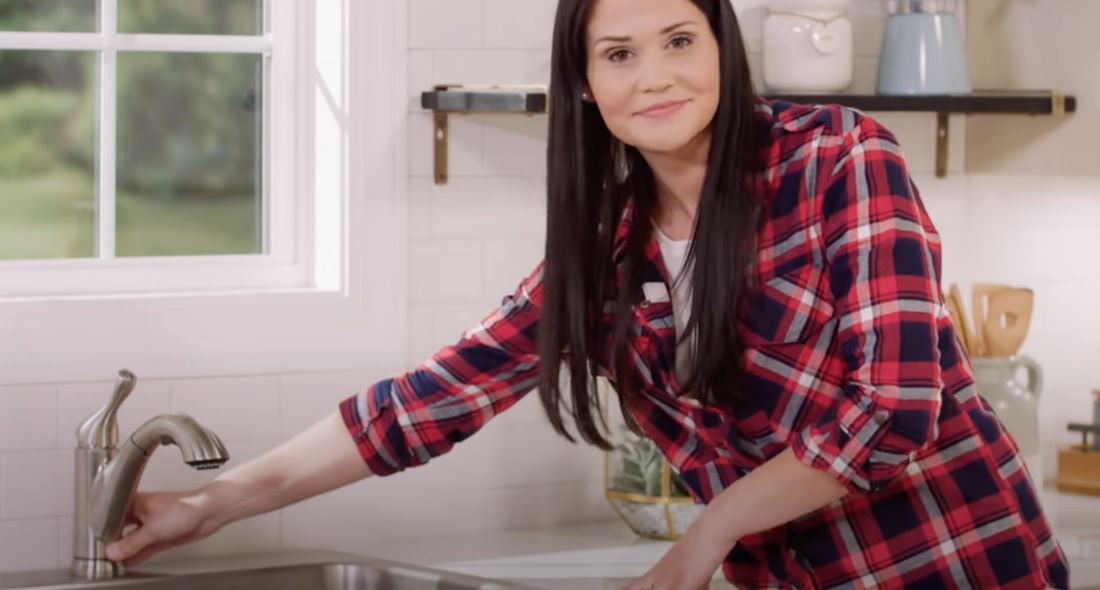When It's Crucial to Mend a Faulty Faucet
When It's Crucial to Mend a Faulty Faucet
Blog Article
The article which follows relating to Should I Repair or Replace a Leaky Faucet? is indeed remarkable. Don't miss out on it.

Dripping faucets might appear like a minor trouble, yet their influence goes beyond simply the nuisance of the sound. From wasting water to sustaining unneeded financial expenses and health dangers, ignoring a leaking faucet can bring about various consequences. In this short article, we'll explore why it's crucial to resolve this usual home issue quickly and efficiently.
Waste of Water
Environmental Impact
Dripping taps contribute considerably to water waste. According to the Epa (EPA), a single faucet trickling at one drip per secondly can waste greater than 3,000 gallons of water per year. This not just pressures water sources however likewise affects communities and wild animals dependent on them.
Financial Prices
Enhanced Water Bills
Beyond the ecological impact, leaking faucets can blow up water costs substantially. The collected wastage with time converts into greater energy expenses, which can have been stayed clear of with prompt repair services.
Prospective Home Damages
Additionally, extended leaking can result in damage to fixtures and surface areas bordering the tap. Water build-up can trigger staining, deterioration, and also structural problems if left neglected, causing additional repair work prices.
Health Issues
Mold and Mold Development
The consistent visibility of moisture from a dripping faucet produces a perfect atmosphere for mold and mildew and mildew development. These fungis not only endanger indoor air quality yet also pose health and wellness threats, specifically for individuals with respiratory system conditions or allergies.
Waterborne Diseases
Stagnant water in leaking taps can become a breeding place for microorganisms and other pathogens, boosting the danger of waterborne diseases. Pollutants such as Legionella bacteria prosper in stationary water, possibly leading to significant health problems when ingested or inhaled.
Do it yourself vs. Expert Repair work
Benefits and drawbacks of DIY Repair
While some might try to repair a leaking tap themselves, DIY fixings come with their own collection of challenges. Without appropriate understanding and devices, do it yourself efforts can aggravate the concern or lead to insufficient repair work, extending the problem.
Advantages of Hiring a Specialist Plumber
Hiring a specialist plumber guarantees that the underlying root cause of the leaking faucet is addressed properly. Plumbing professionals possess the expertise and devices to detect and repair tap issues efficiently, saving time and reducing the danger of additional damages.
Step-by-Step Guide to Dealing With a Dripping Faucet
Devices Needed
Prior to trying to take care of a trickling tap, collect the needed tools, consisting of an adjustable wrench, screwdrivers, replacement parts (such as washing machines or cartridges), and plumber's tape.
Usual Tap Issues and Their Solutions
Recognize the sort of tap and the particular concern creating the drip. Common problems include worn-out washers, rusty shutoff seats, or faulty O-rings. Refer to supplier guidelines or on-line tutorials for step-by-step advice on repair services.
Safety nets
Routine Upkeep Tips
To prevent leaking taps, carry out regular upkeep such as cleaning up aerators, evaluating for leaks, and replacing damaged components quickly. In addition, think about setting up water-saving devices or updating to more reliable components.
Value of Prompt Services
Dealing with trickling taps as quickly as they're noticed prevents additional water wastefulness and possible damages, ultimately saving both water and cash in the future.
Influence On Residential Or Commercial Property Value
Perception of Well-Maintained Property
Preserving a property in good condition, consisting of addressing maintenance concerns like dripping faucets, boosts its viewed worth and desirability among possible purchasers or tenants.
Impact on Resale Value
Qualities with well-maintained plumbing components, consisting of taps, command higher resale values in the realty market. Attending to trickling taps can contribute to a positive perception throughout residential property evaluations and arrangements.
Ecological Obligation
Specific Payment to Preservation
Taking responsibility for fixing dripping taps straightens with more comprehensive efforts toward water conservation and environmental sustainability. Every individual's actions collectively make a significant effect on preserving precious sources.
Lasting Living Practices
By prioritizing prompt repairs and embracing water-saving habits, people contribute to sustainable living techniques that benefit both present and future generations.
Conclusion
Addressing a dripping tap exceeds simple benefit; it's an essential action toward saving water, decreasing economic prices, and safeguarding wellness and residential property. Whether with do it yourself fixings or professional support, doing something about it to fix trickling faucets is a small yet impactful way to promote liable stewardship of sources and contribute to a healthier, much more lasting future.
How to Fix a Leaky Faucet: Step-by-Step Repair Guide
A leaky faucet may seem like a simple annoyance, but if it's not fixed promptly, that leak could cost hundreds to potentially thousands. From water damage to mold, mildew, and high water bills, even a tiny leak can be catastrophic if left unattended. Damage like this can even affect the overall value of your home, so it's important to take the right approach for leaky faucet repair. You may need the help of a plumber in some cases, but we've got a few tips you can try on how to fix a leaky faucet before calling the pros.
Four Faucet Types
When you're learning how to fix a leaky faucet, the first step is knowing what kind of faucet you're working with! There are four common types.
Cartridge Faucets
Cartridge faucets come in one- or two-handled varieties. In one-handled cartridge faucets, hot and cold water combines in a single cartridge. In the two-handled versions, hot and cold water are controlled separately and mixed in the faucet.
Ball Faucets
Ball faucets have a single lever you push up and down to adjust the pressure and rotate to change the temperature. A slotted metal ball controls the amount of water allowed into the spout.
Compression Washer Faucets
They're the oldest type of faucet, but they're still used in many homes — especially older ones. Compression faucets have two separate handles that, when turned, raise or lower the washer that seals a water valve. This valve stops water from flowing through the faucet when it is turned off.
Disc Faucets
Disc faucets rarely need to be repaired due to their maintenance-free design. The water flow is controlled by two discs — the upper one raises and lowers against a fixed lower disc, creating a watertight seal. If your disc faucet starts leaking, you may need to replace the seals or clean residue buildup from the inlets.
Fixing a Leaky Faucet
Step 1: Turn Off the Water
Whether you're learning how to fix a leaky bathtub faucet or how to fix a leaky kitchen faucet, always turn off the water supply to your working area when you're fixing a leak. The last thing you want is a flood added to your list of things to fix.
Look for the shutoff valves below your sink or around the tub and turn them clockwise to stop the water flow. If your faucet doesn't have shutoff valves, you may need to turn off the water for the whole house. Check to make sure it's off by turning the faucet on. If nothing comes out, you're ready to start the repair.
Step 2: Take Apart the Faucet
How you disassemble your faucet depends on the type of fixture you have. You can use a flathead screwdriver to remove the caps on top of the handle or handles for cartridge and compression faucets. Inside, you should see handle screws. Unscrew these with a screwdriver to remove the handle.
Disc- and ball-style faucets will typically have an inlet screw near the handle, and removing that will reveal the interior of the faucet.
Detach the Valve Stem
For cartridge- and compression-style faucets, you'll see the inner valve stem or cartridge once you remove the faucet handles. If you have a compression faucet, unscrew the brass valve stem. If you have a cartridge faucet, pull out the cartridge. If your cartridge has been in place for a while, it may require some tools or extra force to remove it due to mineral deposits.
Examine and Replace Parts
Once you've removed the parts, check them out to confirm what needs to be replaced. You may see corroded rubber washers, O-rings, stems, or cartridges. On a ball-style faucet, check the seats and springs for damage.
If you need to repair a leaky disc faucet, check the inlet and seals on the lower disc.
Once you determine what parts must be replaced, visit your local hardware store. Bring the damaged parts with you to ensure you can purchase the correct components to replace them.
Clean Valves and Faucet Cavity
If you've removed a stem or cartridge, you may notice mineral buildup in the faucet's threads. Use white vinegar to clean the valve seat by soaking it for a few minutes, then scrub it away with a soft toothbrush and rinse with warm water. You can also clean the interior of the faucet in the same way.
Reassemble the Faucet
Once your faucet is cleaned and the required parts have been replaced, it's time to reassemble it. Put the pieces back together and slowly turn the water supply back on. Doing this slowly is crucial because too much initial water pressure can damage the new hardware you've just installed.
https://homewarranty.firstam.com/blog/how-to-fix-leaky-faucet

I found that blog posting on Should I Repair or Replace a Leaky Faucet? while doing a lookup on the internet. Enjoyed our posting? Please share it. Let other people find it. Thanks a lot for taking the time to read it.
Report this page